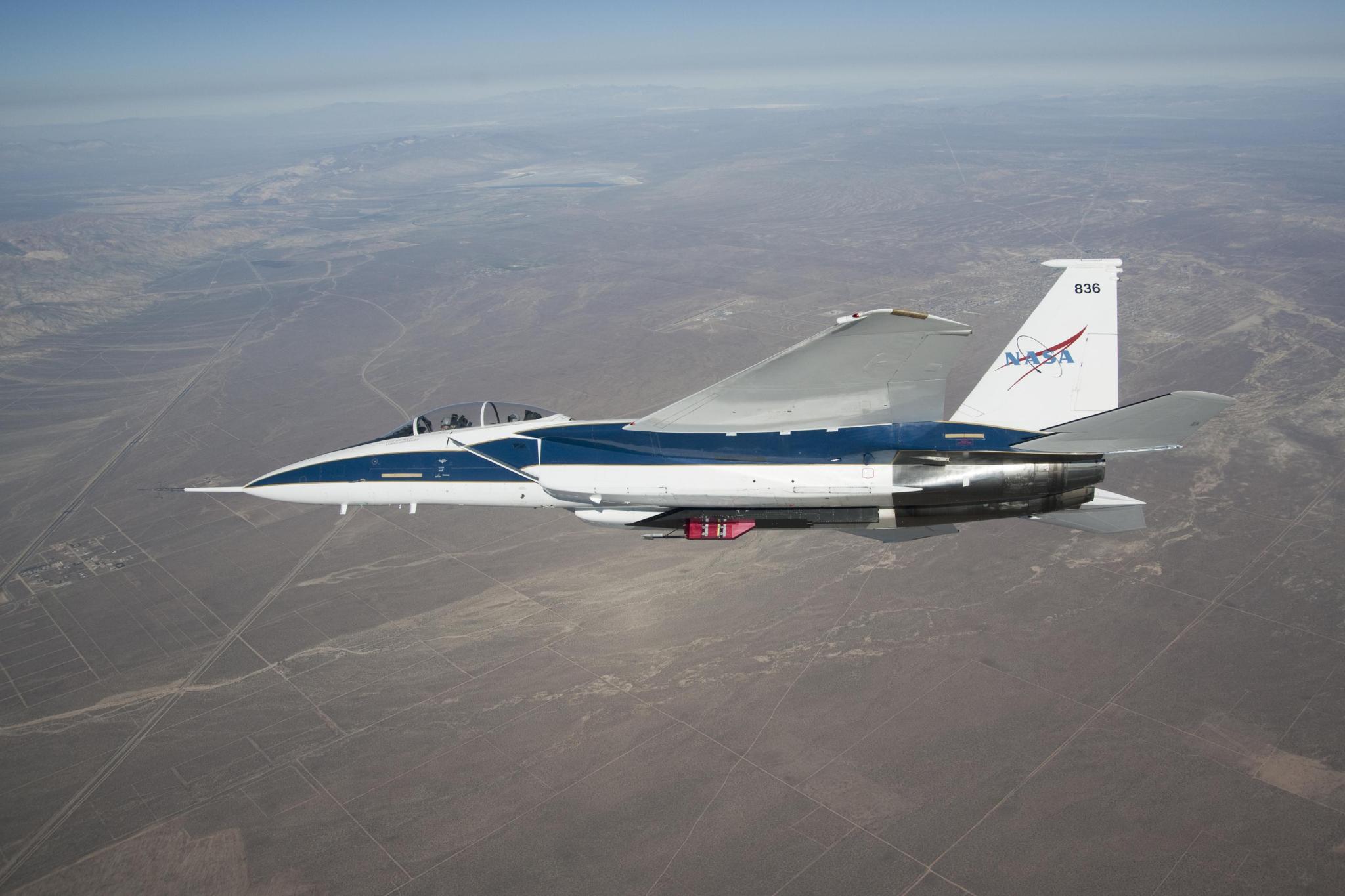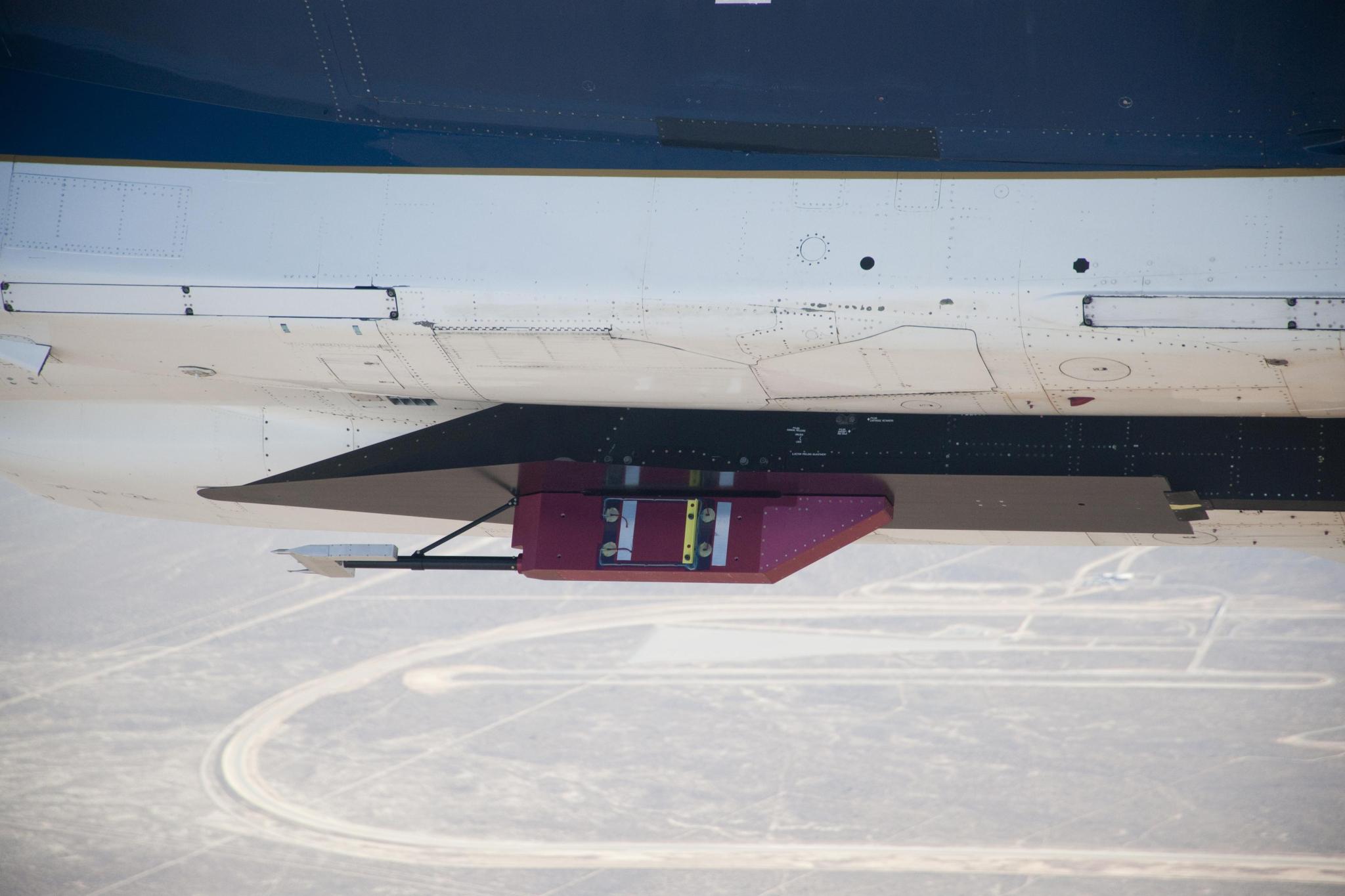NASA’s Dryden Flight Research Center is flight testing two new supersonic shockwave probes to determine their viability as research tools.
The probes were designed by Eagle Aeronautics of Hampton, Va., under a NASA Research Announcement, and manufactured by Triumph Aerospace Systems of Newport News, Va. The probes were first tested in a wind tunnel at NASA’s Langley Research Center, also in Hampton.
The new probes are being flown on NASA Dryden’s F-15B research test bed aircraft.
Supersonic flight over land is severely restricted in the United States and elsewhere because the sonic booms created by the shock waves propagating from supersonic aircraft are an annoyance to many and can damage private property.
Sonic boom researchers hope the Eagle Aero probes will aid their understanding of supersonic shockwaves. The ultimate goal of NASA’s sonic boom research is to find ways to control the shockwaves and lessen the noise, so that it may be possible for supersonic flight to become more routine.
“Using these probes can be a real benefit in understanding and modeling the generation of shock waves and their associated sonic booms,” said Dryden research engineer Dan Banks. “They could allow us to accurately define the near-instantaneous flight conditions of the aircraft being probed, while defining that airplane’s flow field. At the same time, the probes provide flight condition data on the host aircraft,” Banks said.
The primary objective of the flight series is to determine the feasibility of using the Eagle probes for air-to-air shockwave probing. Additional objectives include determining the durability and robustness of the probes in flight, their sensitivity to flight conditions, and the accuracy of the software.
During the initial flight test phase, the probes are attached to an adapter that hangs on the aircraft’s centerline instrumented pylon, or CLIP. A large splitter plate separates the CLIP from the F-15B. This helps protect to the aircraft in the unlikely event of flutter, or damaging vibration, that might cause the probes to break off the CLIP.
The two probes are mounted beside each other on the CLIP, one wedge-shaped and the other is conical. Both are designed to make very accurate measurements of supersonic airflow, improving the quality of the shockwave data engineers can glean.
If the probe combo proves robust in this series of tests, researchers could develop a follow-on series with the probes attached one at a time to the F-15B’s nose so each has access to the clean airstream in front of the aircraft. Mounting such devices on the aircraft’s nose is the normal and preferred placement, which allows them access to the clean airstream ahead of the carrier aircraft.
Later test flights could include a second supersonic aircraft flying ahead of the probe-carrying F-15 to generate shockwaves for an early look at the probes’ shockwave-sensing capabilities.
Past supersonic shockwave probing efforts, such as the Lancets project flown at Dryden in 2008-2009, used a standard probe. The more streamlined Eagle Aero probes contain accurate high-response transducers that help to eliminate any lag or other errors as they measure upstream and downstream airflow conditions and can measure flow angles.
For information on the Lancets project, visit: Read more
› View photos
Author: Gray Creech



































